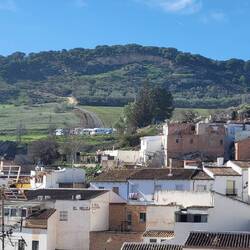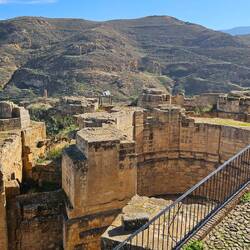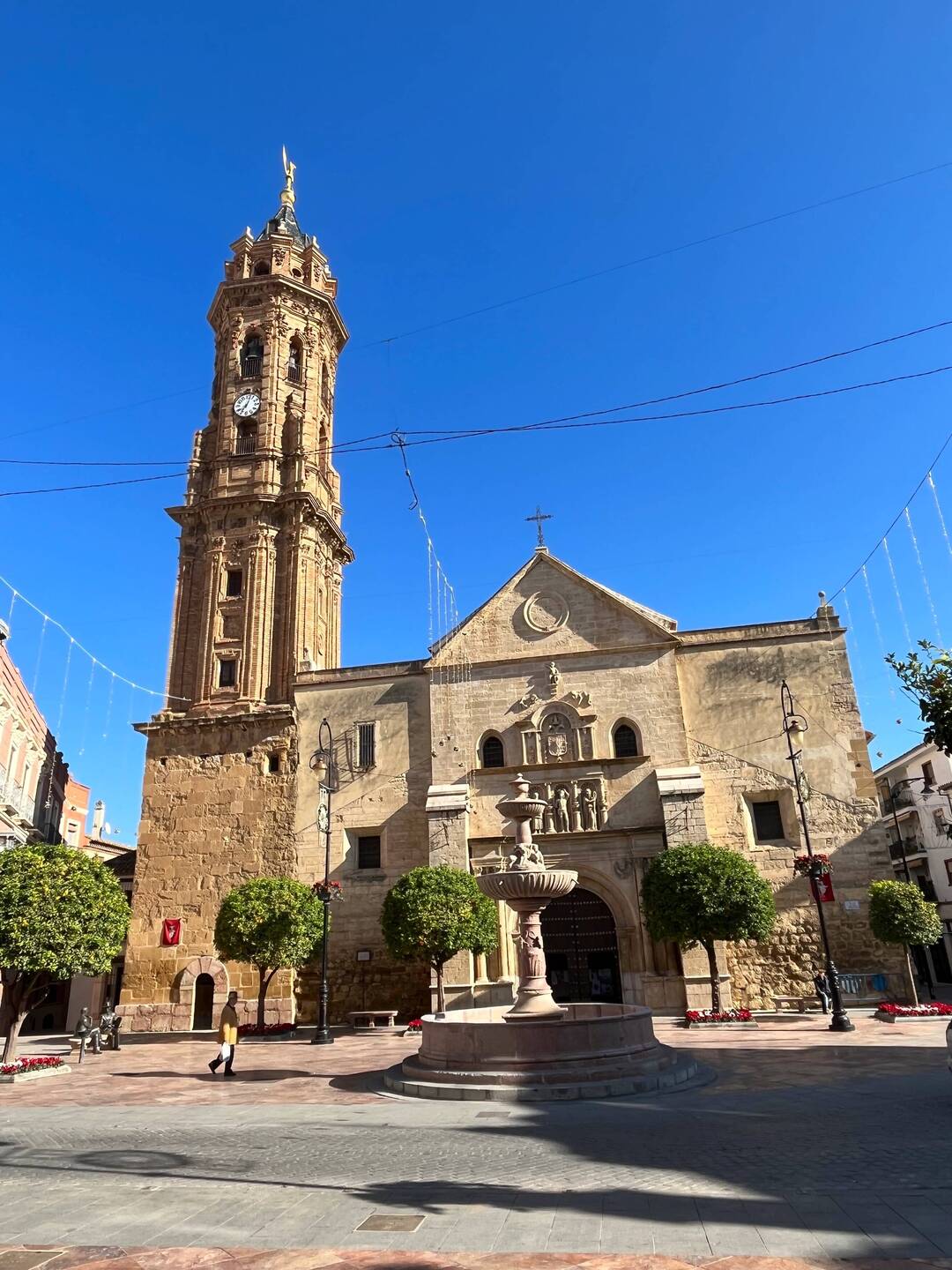- Show trip
- Add to bucket listRemove from bucket list
- Share
- Feb 17, 2024, 12:00pm
- ☀️ 16 °C
- Altitude: 513 m
 SpainAndalusiaAntequeraPlaza Coso Viejo37°1’6” N 4°33’23” W
SpainAndalusiaAntequeraPlaza Coso Viejo37°1’6” N 4°33’23” W
The ‘Tapas Tour That Never Was’ in Jerez
 February 17 in Spain ⋅ ☀️ 16 °C
February 17 in Spain ⋅ ☀️ 16 °C
It’s Chris’ birthday today and we were looking forward to a lunchtime tapas tour. The Get Your Guide ad wrote, “With your guide and small group limited to 15, you’ll visit traditional Spanish tapas joints to sample three local dishes accompanied by three drinks.”
It sounded like a fun activity with a small group of English-speaking people but it didn’t happen …
Chris and I went to the designated meeting spot at 12 p.m. and due to the Carnaval activities the whole area was full of groups of people. And I mean full! Hundreds of people milling around with small groups that were dancing and singing and acting. Where could our guide be? No one had a colourful umbrella or funny hat or a stick with a flower on it. So we missed the tour…but…
I remember reading a review that had mentioned Tio Pepe’s famous winery so we headed there and hoped that the group was there. On the way, we met a couple of Canadians who travel a lot, Jenny and Bruce, from Victoria who were looking for their tour too but they were on a Sherry tour.
We asked if the tapas tour was here, and the lady at the counter said that we could join the English Sherry Tour that was starting in a few minutes. Sounded like a good alternative!
Here’s their little write up - “Imagine travelling by train through Tio Pepe’s vineyards and gardens, strolling among ancient wine cellars with more than 180 years of history, and discovering the incredible flavours and aromas of the best sherry wines.” That tour was followed up by a Sherry tasting and tapas.
Chris was very happy with the tour. He especially enjoyed checking out the signatures and messages of famous people written on the big barrels. They have a lovely tradition there, encouraging important visitors to sign the barrels which are painted a chalkboard-like black to highlight any leaks. We saw the signatures of celebrities like Lana Turner, Steven Spielberg and Orson Welles. Artists including Picasso – the only one to sign in colour. Political figures like Margaret Thatcher, Winston Churchill and Chelsea Clinton. And musicians like Cole Porter.
We joined Jenny and Bruce in the tasting room and enjoyed sharing travel stories while sampling the sherry, or was it wine? They are very interesting and interested people.
Three hours later, we walked the short distance home at the height of Carnaval activities. Actually we stopped for a drink and more tapas, and people watched. There was so much fun stuff to see! Funny costumes, bands and lots of little dogs. There are a lot of dachshunds and Maltese terriers in Spain. Lol.
When we got home, I contacted the Get Your Guide people, they contacted the tour people who contacted me with what had happened and said that they are sending us a refund. All in all a good ending to a rough start. And the Sherry Tour was free!
Happy Birthday dear Chris! (And to his twin sister, Hilary, too!).Read more
































































































































































Traveler 🇨🇦
🇨🇦
Ladyandtramp Yes. Exported to Canada!
Yes. Exported to Canada!
Traveler 👌
👌